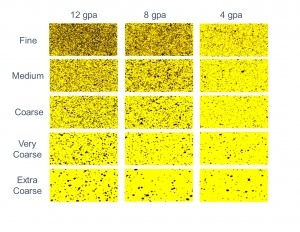First of all, did it go where it was supposed to go?
I have been at several grower meetings lately where there has been talk of pesticide sprays and the value of coverage. If it's not where you want it, its not going to do it's job and might do some other job you don't want. Some sprays need to be spot on to do their job. “Contact sprays” like pyrethrums, oils and soaps need to contact the pest to knock out the pest. Even translaminar materials, like spinosad and abamectin, need to be in the location of the plant where the pest is feeding for them to work.
So how do you assess coverage? Unless you know where the sprays is going, you don't know whether the spray job worked until after you've wasted time and material to see if the pests are gone. Water sensitive papers placed in the tree can tell you where the spray is going and whether the application is successful. Was the volume right? Was the application speed right? Was too much material applied? Too little? The cards can be used for a quick evaluation of spray distribution, droplet density and canopy penetration.
The water sensitive paper cards are rigid pieces of paper that are yellow in color. They have specially coated surfaces that will stain dark blue when exposed to water-like droplets. The cards are stapled into the before you begin spraying. The upper surface will be stained dark blue when exposed by water. The opposite side of the water sensitive cards is water repellent. They cost about a dollar apiece.
Here are some examples of how to use water sensitive cards:
- Aerial Application for detecting coverage and canopy penetration. Cards can be stapled to the leaves at different heights and depths in the tree.
- Orchard Sprayers for evaluating spray distribution and spray penetration throughout the tree. Cards can be stapled to leaves in the upper, center, and lower portions of the tree.
- Backpack / Handheld Sprayers for evaluating spray distribution and droplet density for herbicide applications. Cards can be placed across one run width to determine spray volume and speed.
You can visually inspect the spray cards by counting the droplets by eye, or if needed, using a hand lens or some of the smart phone apps. Quickly glancing at the card, you can determine areas of over-application or under-application, dripping nozzles, or clogged/defective nozzles. It's easy to see whether the aerial spray was effective.
Photo: Spray patterns with different nozzle sizes and different spray volumes
Tom Wolf, https://sprayers101.com/wsp-coverage/
